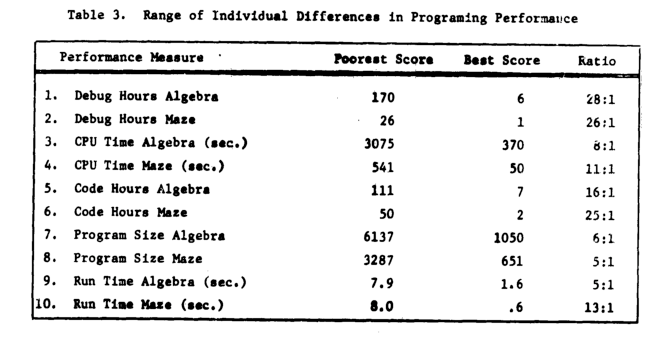Derek Jones from The Shape of Code
During the early years of a new field, experimental data relating to important topics can be very thin on the ground. Ever since the first computer was built, there has been a lot of data on the characteristics of the hardware. Data on the characteristics of software, and the people who write it has been (and often continues to be) very thin on the ground.
Books are sometimes written by the researchers who produce the first data associated with an important topic, even if the data set is tiny; being first often generates enough interest for a book length treatment to be considered worthwhile.
As a field progresses lots more data becomes available, and the discussion in subsequent books can be based on findings from more experiments and lots more data
Software engineering is a field where a few ‘first’ data books have been published, followed by silence, or rather lots of arm waving and little new data. The fall of Rome has been followed by a 40-year dark-age, from which we are slowly emerging.
Three of these ‘first’ data books are:
- “Man-Computer Problem Solving” by Harold Sackman, published in 1970, relating to experimental data from 1966. The experiments investigated the impact of two different approaches to developing software, on programmer performance (i.e., batch processing vs. on-line development; code+data). The first paper on this work appeared in an obscure journal in 1967, and was followed in the same issue by a critique pointing out the wide margin of uncertainty in the measurements (the critique agreed that running such experiments was a laudable goal).
Failing to deal with experimental uncertainty is nothing compared to what happened next. A 1968 paper in a widely read journal, the Communications of the ACM, contained the following table (extracted from a higher quality scan of a 1966 report by the same authors, and available online).

The tale of 1:28 ratio of programmer performance, found in an experiment by Grant/Sackman, took off (the technical detail that a lot of the difference was down to the techniques subjects’ used, and not the people themselves, got lost). The Grant/Sackman ‘finding’ used to be frequently quoted in some circles (or at least it did when I moved in them, I don’t know often it is cited today). In 1999, Lutz Prechelt wrote an expose on the sorry tale.
Sackman’s book is very readable, and contains lots of details and data not present in the papers, including survey data and a discussion of the intrinsic uncertainties associated with the experiment; it also contains the table above.
- “Software Engineering Economics” by Barry W. Boehm, published in 1981. I wrote about the poor analysis of the data contained in this book a few years ago.
The rest of this book contains plenty of interesting material, and even sounds modern (because books moving the topic forward have not been written).
- “Program Evolution: Process of Software Change” edited by M. M. Lehman and L. A. Belady, published in 1985, relating to experimental data from 1977 and before. Lehman and Belady managed to obtain data relating to 19 releases of an IBM software product (yes, 19, not nineteen-thousand); the data was primarily the date and number of modules contained in each release, plus less specific information about number of statements. This data was sliced and diced every which way, and the book contains many papers with the same data appearing in the same plot with different captions (had the book not been a collection of papers it would have been considerably shorter).
With a lot less data than Isaac Newton had available to formulate his three laws, Lehman and Belady came up with five, six, seven… “laws of software evolution” (which themselves evolved with the publication of successive papers).
The availability of Open source repositories means there is now a lot more software system evolution data available. Lehman’s laws have not stood the test of more data, although people still cite them every now and again.
